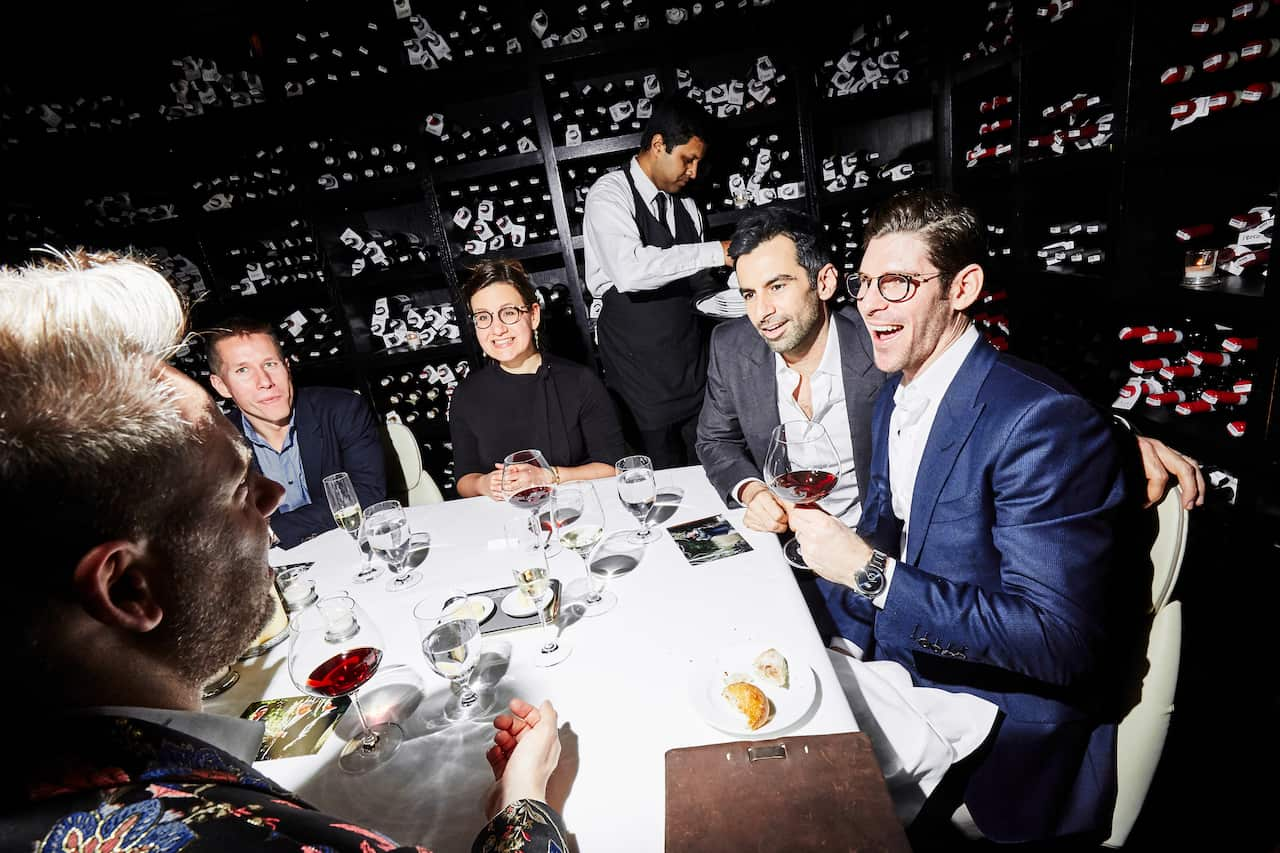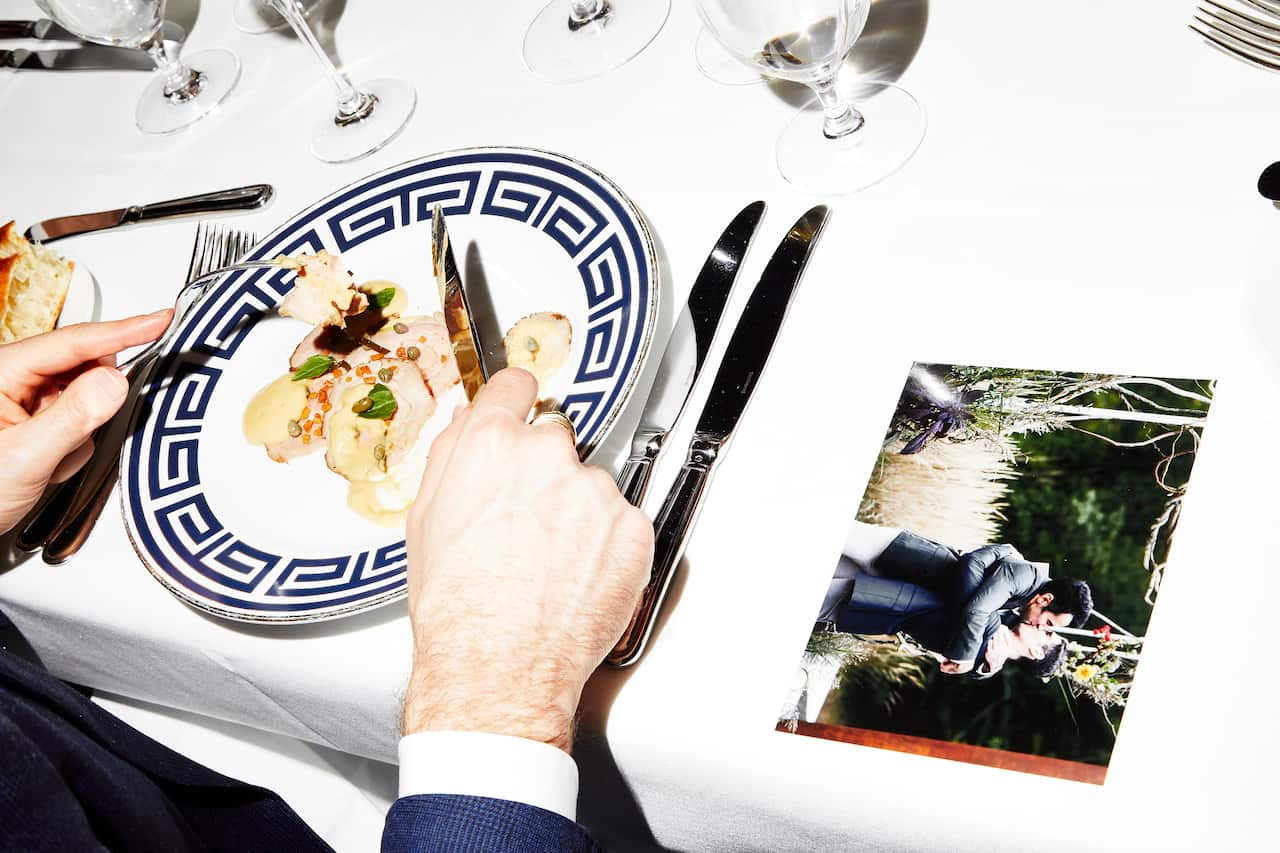Preview above: Insight takes a look at how wedding customs are evolving in Australia. Watch Weddings, Dollars and Dowries SBS On Demand.
Before he became my husband, Stephen Mack would say, “I want to be married, not get married.” He hates being the centre of attention, so after he proposed to me a few years ago (out of nowhere, at a theatre, right as the curtain was going up), we struggled with how to proceed with a wedding.
Eloping was an obvious option, but we couldn’t imagine excluding our families. I suggested a small, highly selective, casual reception. But by the time we counted aunts, uncles, cousins and our closest friends, we could never get it under 100 people. As the numbers crept up, I’d watch Stephen shrivel and was reminded that he took no joy in imagining this event.
Then one night, after I suggested yet another variation on the traditional reception, Stephen said in exasperation: “You know the thing I like most? Small dinners with friends.”
“Then let’s just do that,” I blurted back. “Let’s do a bunch of them.” Stephen sat up. We looked at each like, “Is that allowed?” As we began brainstorming what this idea might look like, it was the first time I saw him excited for our wedding.
And so that’s what we’ve done. Instead of the usual one-night-only, blowout bash, we broke down our wedding reception into intimate gatherings of unexpected guest pairings, spread over six months. The process was a leap of faith (just like our relationship, which started out long distance between New York and Tel Aviv). But as we near the end of this experiment, we’ve been relieved to discover that it has been as fun, meaningful, cost-effective and low-stress as we hoped it would be. Not to mention a nifty sidestep around the wedding industry. We soon took to calling it our Deconstructed Reception, and it looks like this: After a ceremony last September in the Hudson Valley of New York for our immediate families (grand total: 11 guests), we’re holding a dozen mini-receptions for extended family and small groups of friends through May. The idea was that we would get to sit at each reception table for an entire evening, and every guest in turn would be seated at the grooms’ table. No quick hugs and a breathless “thanks for coming” on repeat; rather, we’d get a whole, unrushed meal with our favorite people to celebrate our union.
We soon took to calling it our Deconstructed Reception, and it looks like this: After a ceremony last September in the Hudson Valley of New York for our immediate families (grand total: 11 guests), we’re holding a dozen mini-receptions for extended family and small groups of friends through May. The idea was that we would get to sit at each reception table for an entire evening, and every guest in turn would be seated at the grooms’ table. No quick hugs and a breathless “thanks for coming” on repeat; rather, we’d get a whole, unrushed meal with our favorite people to celebrate our union.

The couple said the small-group gatherings,allowed them to spend more time with guests and save money in the long run. Source: Amy Lombard/The New York Times
The trade-off, of course, is that none of our friends witnessed our ceremony. They didn’t see the rain clear and the sun cut through the clouds right before we began, they didn’t get to hear our parents share advice from their 40-year marriages, they didn’t get to cheer our big, concluding smooch or watch me fall into Stephen’s chest immediately afterward for a deep ugly cry.
That’s not a small sacrifice. But we chose intimacy over pageantry, which was the right choice for us. (To be clear, there’s nothing wrong with pageantry.) We’ve used our Deconstructed Reception as a show-and-tell of our nuptials and as a way to include our guests in the experience, thus expanding, dinner by dinner, the community of people who are now part of the story. So, what does that actually look like from the perspective of our guests?
So, what does that actually look like from the perspective of our guests?

The couple opted to celebrate their recent wedding with a dozen small gatherings what they dubbed Deconstructed Receptions instead of one large event. Source: Amy Lombard/The New York Times
Using Eventbrite (which Stephen, a tech consultant by trade, wrangled to fit our needs), we created an “event” for each dinner and its location: Eight in New York (where we live), two in Los Angeles (where I’m from), one in San Francisco (where many of our friends ended up) and one in Tel Aviv, Israel (where I went to graduate school).
We chose multiple locations out of consideration for our guests — a dinner, after all, is not a wedding, and we felt uncomfortable asking friends to travel long distances for a meal, however special that meal might be. We scheduled the out-of-town dinners to coincide with work trips and family events and made Tel Aviv part of our honeymoon to justify that trek. The theme here is ease and convenience for all, including us.
Our friends selected the date and city that worked best for them. The New York dinners have a maximum of 10 guests each; the out-of-town dinners are slightly larger, but no more than 20 (any larger and you begin to lose the relaxed coziness that defines these dinners). We didn’t curate the guests; rather, we let our friends sort themselves randomly, which has led to wonderfully unexpected mixings of our various circles.
Once the dinners began to fill up, we started calling restaurants. Private rooms were necessary, we realized, given the amount of talking we planned to do. We also learned that each dinner must take place at a different venue to keep the experience fresh for us and so that each leaves a distinct imprint. Otherwise, they’d all blur together, becoming as foggy as a typical reception.
Part of what made Stephen uneasy about a big reception in the first place was the feeling of asking so much of our friends and family — the time, the travel, the cost. And one of the reasons the deconstructed model works for us is that it allowed us to reframe the celebration as a gift to them instead, to thank them for the years of love and laughs. We wanted to treat them to top-shelf dining experiences, essentially getting the city’s best chefs to cater our wedding — inclusive of venue, décor and centerpieces. That comes at a price, but a relatively reasonable one when compared to a standard wedding. A recent study by the Knot found that the average New York wedding costs around $77,000. Combined, our low-key ceremony and mini-receptions at some of the best restaurants in town were about a third less.
We wanted to treat them to top-shelf dining experiences, essentially getting the city’s best chefs to cater our wedding — inclusive of venue, décor and centerpieces. That comes at a price, but a relatively reasonable one when compared to a standard wedding. A recent study by the Knot found that the average New York wedding costs around $77,000. Combined, our low-key ceremony and mini-receptions at some of the best restaurants in town were about a third less.

The small-group gatherings, which the couple dubbed Deconstructed Receptions Source: Amy Lombard/The New York Times
And the cost could have been lower still, because the beauty of this model is how flexible it is to any budget. We’re lucky to have access and the resources to enjoy fancy New York spots, but a Deconstructed Reception can take place in favorite barbecue joints, mom-and-pop establishments or even your home. We’re holding 12, which will accommodate about 140 guests, but you can do as few as five or as many as 20 and spread them over a month or a year.
I’ll admit it’s strange to wake up on a random Thursday, a half-year after the wedding, look at the calendar and realize, “Oh yeah, we’re celebrating our marriage tonight. Again.” My fear was that it would start to feel routine (“Bridesmaids” meets “Groundhog Day”) or that after an underwhelming first dinner, we’d be stuck with 11 more.
That hasn’t been the case. With each new place, each stellar meal, each surprising configuration of friends, the genuine joy returns. Rather than a flash-in-the-pan moment, however magical that moment may be, the Deconstructed Reception has allowed us to marinate in this major milestone, recasting it from a one-time reunion into an ongoing communal journey.
Plus, there’s the added advantage of claiming, again and again, the permission to indulge when it’s your special day. At one of our dinners, a waiter offered Stephen an extra helping of dessert. “What the hell,” Stephen said, accepting it. “You only get married 12 times.”
Share
Insight is Australia's leading forum for debate and powerful first-person stories offering a unique perspective on the way we live. Read more about Insight


